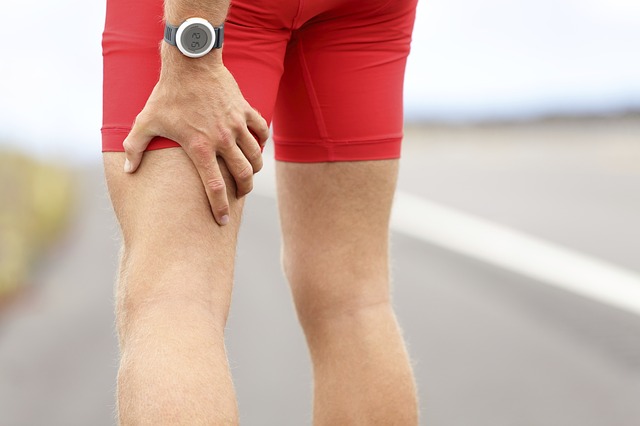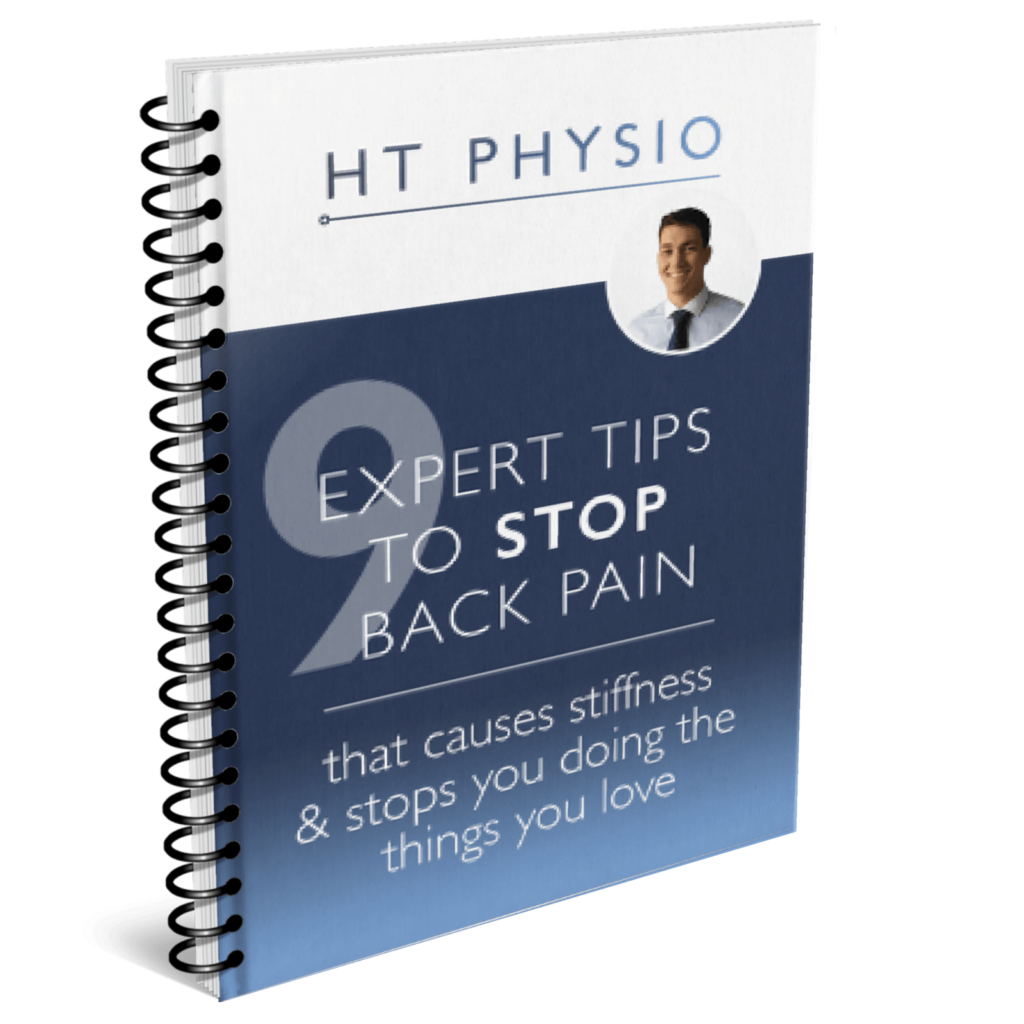Back pain can be confusing! Not all back pain is actually as a result of a genuine back problem; sometimes it can be a hip or leg problem responsible for your back pain. Today, we talk about how the hips and legs can cause back pain and how to tell where the true culprit is.
This may surprise you but at least 30% of the time with the clients we see at HT Physio, their back pain has come from a problem in their hips or legs.
Often, these people aren’t aware that they have any issues with their hips or legs – these areas are usually completely pain-free. That’s why it usually takes an expert to identify one of these issues.
What Problems in the Hips or Legs Can Cause Back Pain?
Tight Leg Muscles
One of the more common issues we see is a tightness in the muscles of the legs, particularly the following muscle groups: hamstrings, gluteals and hip flexors.
The hamstrings are the muscles at the back of your legs. They help to bend the knee when they contract. When the hamstrings get tight, they can “pull” on the pelvis and cause the hips to tilt backward, which can put extra stress on the back.

The gluteals are the muscles that make up your buttock region. They are responsible for keeping your hips steady when you walk and for allowing you to propel yourself forward when walking. They also help you lift your legs to the side. When the gluteals get tight, they can disadvantage the back muscles and make them painful, which often feels like intermittent sharp stabbing pains in the lower back when you get up from a chair.
The hip flexors are a set of very deep muscles that you can’t touch or feel. They sit at the front of the body, underneath your internal organs around the hip. They help to drive your leg forward as you walk. When they get tight, they have the opposite effect to the hamstrings on the pelvis; they tilt the pelvis forward. This can out pressure through the joints in the back and cause back pain.
Luckily, physiotherapy is very effective at treating tightness in the leg muscles. Through a combination of hands-on therapy like massage, myofascial release and stretching, you can usually relieve leg muscle tightness pretty quickly – and ease back pain as a result!
Movement Mechanics
Sometimes, the way we move can actually cause us pain – even though there’s no physical “damage” to our bodies.
When we walk, stand and move in certain ways, tissues and structures are put under normal stresses and strains. This is usually completely fine – as long as the parts that are being stressed are the ones that are designed for this purpose.
When our posture changes due to habit or a movement problem, parts of our body can be put under more stress than they are designed for. When this happens in the back, it leads to back pain.
An physiotherapist should be able to identify these problems and suggest slight changes to help your movement – it could be something ridiculously simple like bringing your feet further back before you stand up. However, these tiny changes often bring big results!
Knee or Ankle Problems
If a person has knee pain, this affects that way they walk. As you’re probably aware, knee pain can change your walking pattern and make you limp quite badly.

The same is true with an ankle problem – long-standing ankle issues that lead to inflexibility can cause changes to our walking habits and put undue stress through our backs which can lead to pain after a while.
Again, in these situations, there is no physical problem with your back – it’s just your back’s way of giving you a warning sign that it is being out under too much stress! It is hoping that you change something soon and allow it to work in the way it is designed to!
Once again, physiotherapy is a great way to solve these knee or ankle problems that lead to back pain. Through a combination of stretching and strengthening exercises, as well as targeted hands-on treatment, one can usually help their painful problem and stop it from causing any more back misery!
Conclusion
There is a brief explanation of how back pain isn’t always as it seems! Many times, the problem lies elsewhere. Luckily, for back problems caused by the legs, there is often a simple fix – if you’re not sure, it’s always best to get checked out to be 100% sure!
In the meantime, if you’d like some more tips on how to beat back pain, you can take our free guide “9 Expert Tips to Beat Back Pain That Causes Stiffness and Stops You From Doing the Things You Love” by clicking on the link below!

